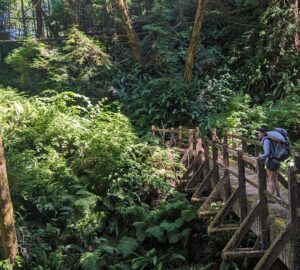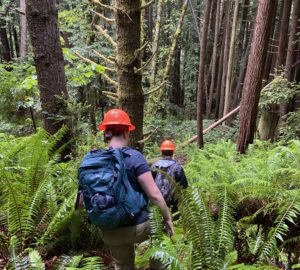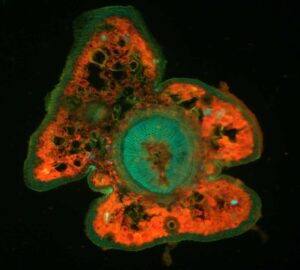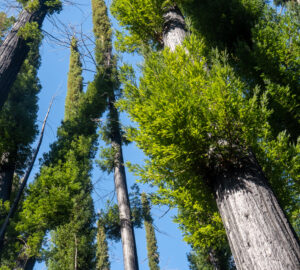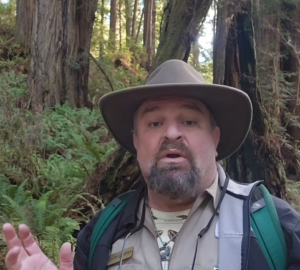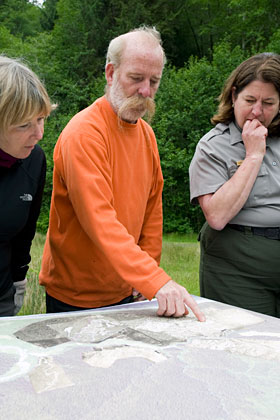
If anything is lacking in Neal Youngblood’s life, it isn’t a professional challenge. As a geologist for Redwood National Park, Youngblood supervises logging road retirement. In terms of restoration of the region’s essential natural systems, there is no job that is more important — or demanding.
“I’ve been here since 1995, and it has always been a primary focus,” Youngblood said. “And it isn’t as though the whole process started with me. The National Park Service has been doing this since the 1980s.”
The learning curve for road removal has been as steep as the park’s precipitous terrain, acknowledged Youngblood. Early on in the process, the emphasis was almost wholly on erosion control. Now, he said, NPS is taking a more holistic approach.
“Obviously, erosion is still a critical focus,” Youngblood said, explaining that work includes restoring the area’s creeks.
It’s the kind of job that’s measured in decades, not years. So far, more than 200 miles of old logging roads have been “put to bed” — or about half the total targeted. Progress is incremental, and measured in the health of the forest’s plant and animal communities.
“You notice it in places like Redwood Creek and Lost Man Creek, where turbidity (cloudiness caused by eroding sediment) has dropped noticeably over the past 10 years,” Youngblood said. “For our salmonids — coho and chinook salmon, steelhead, sea-run cutthroat trout — that has major and positive implications.” Clear streams are essential for these iconic, imperiled fish. Too much sediment in the streams can suffocate their eggs.
Just as these signature species of flora and fauna, people are crucial to the park’s restoration program.
“The Mill Creek watershed is a prime example,” he said. “It was purchased by the Save the Redwoods League and transferred to Del Norte Coast State Redwoods Park. The National Park Service and the State Department of Parks and Recreation are managing state and federal redwood parklands jointly. In other words, everyone — private, state and federal stakeholders — are working together on this. It’s the only way we could get the job done.”
You can learn more about how and why the League restores land and check out articles about what it takes to care for a forest on our Giant Thoughts blog.

